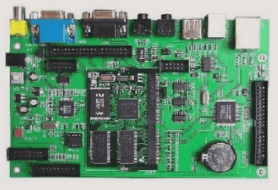The Age of Intelligent Mechanization in PCBA Circuit Board Production
In today’s manufacturing landscape, the integration of machinery and equipment plays a crucial role in the production of PCBA circuit boards. From manipulators utilizing various chips to advanced technologies, the quality of equipment directly impacts manufacturing efficiency.
Essential Equipment for PCBA Production
- Solder Paste Printer: This modern equipment facilitates precise application of solder paste onto circuit board pads, enabling seamless integration with placement machines for automated assembly.
- Mounter: Also known as a “placement machine,” the mounter accurately positions surface mount components onto PCB pads, enhancing production efficiency.
- Reflow Soldering: Utilizing internal heating circuits, reflow soldering ensures precise melting of solder for secure component bonding, offering cost-effective manufacturing solutions.
- AOI Automatic Optical Inspection: This cutting-edge technology employs optical principles to detect soldering defects, enhancing quality control and production efficiency.
Electronic Accessories and Consumables for PCBA Circuit Boards
When analyzing the requirements for PCBA production, it is essential to consider the machinery and consumables necessary for efficient assembly. From solder paste printers to AOI detectors, each component contributes to the overall manufacturing process.
Recent Advancements in PCBA Equipment
Recent developments in PCBA equipment have revolutionized the production process, offering enhanced precision, efficiency, and quality control. Manufacturers are continually innovating to meet the demands of the evolving electronics industry, ensuring optimal performance and reliability in PCBA circuit board production.
Looking Ahead: The Future of PCBA Manufacturing
As technology continues to advance, the future of PCBA manufacturing holds promising opportunities for increased automation, efficiency, and quality assurance. By staying abreast of the latest innovations and industry trends, manufacturers can position themselves for success in the dynamic world of electronic manufacturing.





